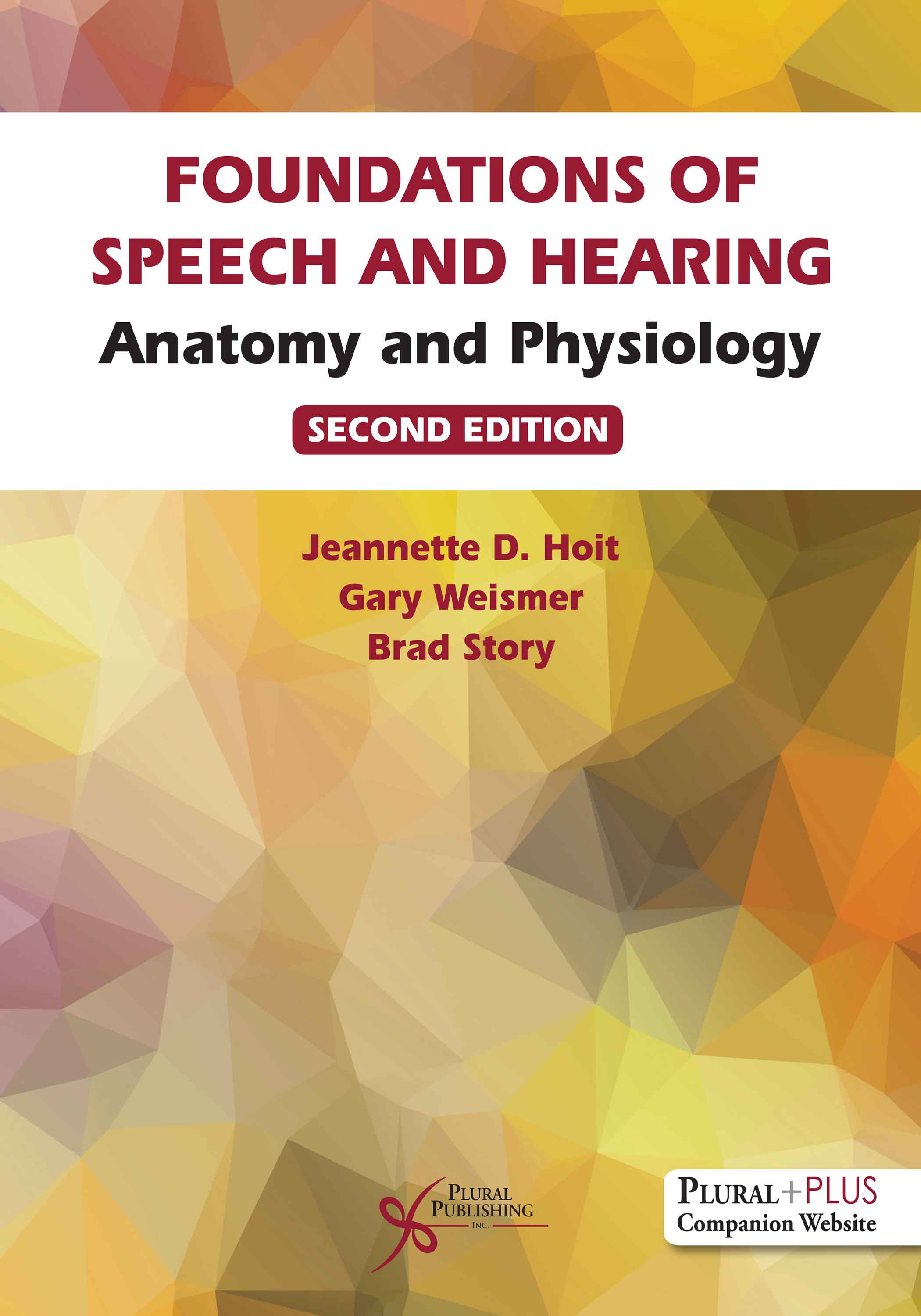
Foundations of Speech and Hearing: Anatomy and Physiology.
Second Edition
Jeannette D. Hoit, Gary Weismer, Brad H. Story
Details: 348 pages, Full Color, Hardcover, 8.5" x 11"
ISBN13: 978-1-63550-306-7
© 2022 | Available
For Instructors
Purchase
This comprehensive textbook for undergraduate-level anatomy and physiology courses in communication sciences and disorders programs is neither oversimplified nor excessively detailed. The book is written with clinical endpoints in mind, and only those topics that are ultimately important to understanding, evaluating, and managing clients with speech, hearing, and swallowing disorders are covered.
Drawing on material from the best-selling Preclinical Speech Science: Anatomy, Physiology, Acoustics, and Perception, Third Edition textbook (Hixon, Weismer, & Hoit, 2020), the authors have provided chapters that cover basic concepts in anatomy and physiology, each of the speech subsystems (respiratory, laryngeal, velopharyngeal-nasal, and pharyngeal oral), the auditory system, swallowing physiology, and neural structures and mechanisms that support speech/language, hearing, and swallowing. The text was carefully crafted to meet the needs of entry-level university students and the figures were designed to feature the key elements of the concepts discussed in the text.
New to the Second Edition
- New author, Brad Story, PhD, who brings fresh ideas and perspectives to the book
- New introductory chapter that covers several basic concepts of anatomy and physiology
- 28 videos that demonstrate key concepts in the text, most of which were created specifically for this book
- Clinical Notes sections that highlight the relevance of anatomy and physiology to the clinical practices of speech-language pathology and audiology
- Nearly 100 new or updated illustrations
- Extensively revised text to enhance clarity and provide support for beginning students
- Updated material based on recent literature
Key Features
- Numerous beautiful, full-color illustrations
- Complex information presented clearly and concisely, in an easy-to-understand manner
- Clinical applications to basic anatomy and physiology are woven throughout the book
- Supplementary resources on the PluralPlus companion website, including PowerPoint slides and test questions for instructors and videos, study guides, and homework exercises for students
List of Videos
- Respiratory Anatomy
- Balloon Analogy of the Respiratory System
- Diaphragm Movement
- Ventilation
- Sustained Vowel - Volume and Pressure
- Running Speech - Volume and Pressure
- Vocal Fold Model
- Adduction, Abduction, Length Change
- Glottal Fricative and Whisper
- Vocal Fold Vibration
- Fundamental Frequency
- Source-Filter
- Velopharyngeal Closure
- VP-N Acoustic Impedance
- Grandfather Passage
- Nasalization
- Hypernasality
- Vowel Articulation
- Consonant Articulation
- Microbeam Abracadabra
- Sliding Articulatory Gestures
- Glossectomee
- Tonotopic Organization
- Traveling Wave
- Sound to the Brain
- Oral Phase Tongue Movement
- Videofluoroscopy Normal
- Videofluoroscopy Abnormal
PluralPlus Online Ancillaries
For instructors: PowerPoint Slides, Videos, Test Bank, Activities/Exercises, Answer Key
For students: Videos, Study Guides, Activities/Exercises
Reviews
“The purpose is to introduce the audience to speech and hearing science. The book succeeds with its clear explanations of these areas and the companion website does a nice job enhancing the written text with additional resources, like videos. […]
The book covers speech and its subsystems (respiration, phonation, resonance, and articulation), swallowing, hearing, and the nervous system. Each chapter is presented in outline form and concludes with a review and relevant references. Chapters use both black-and-white and color figures as well as helpful tables that summarize information. Boxes in each chapter the authors call "Sidetracks" contain interesting rabbit trails connected to the chapter's content.”
— Matthew H Rouse, MS, SLP.D., CCC-SLP, Biola University, in Doody’s Reviews (July 2021)
"The text is succinct and concise, yet thorough in its presentation of A & P of the speech and hearing mechanism. This very dense information is presented in a format that makes a complex topic very digestible and easy for students to understand."
— Yvette M. McCoy, MS CCC-SLP, BCS-S, Moravian University, (March 2023)
Preface
Acknowledgments
About the Illustrator
Chapter 1. Introduction to Basic Concepts
Introduction
Subsystems
Speech Subsystems
Hearing Subsystems
Directions and Planes
Directions
Anterior/Posterior (Ventral/Dorsal)
Superior/Inferior (Rostral/Caudal)
Medial/Lateral
Proximal/Distal
External/Internal (Superficial/Deep)
Ipsilateral/Contralateral
Planes
Sagittal Plane
Coronal Plane
Horizontal Plane
Tissue Types
Epithelial Tissue
Connective Tissue
Muscle Tissue
Movements and Forces
Stages of Spoken Communication
Review
Reference
Chapter 2. Respiratory Structure and Function
Introduction
Respiratory Anatomy
Skeletal Framework
Respiratory System Subdivisions
Pulmonary Apparatus
Pulmonary Airways
Lungs
Chest Wall
Rib Cage Wall
Diaphragm
Abdominal Wall
Abdominal Content
Pulmonary Apparatus–Chest Wall Unit
Forces of the Respiratory System
Passive Force
Active Force
Muscles of the Rib Cage Wall
Muscle of the Diaphragm
Muscles of the Abdominal Wall
Summary of Passive and Active Forces
Realization of Passive and Active Forces
Movements of the Respiratory System
Movements of Rib Cage Wall
Movements of the Diaphragm
Movements of the Abdominal Wall
Relative Movements of the Rib Cage Wall and Diaphragm-Abdominal Wall
Forces Underlying Movements
Respiratory Control Variables
Lung Volume
Alveolar Pressure
Chest Wall Shape
Neural Substrates of Respiratory Control
Control of Tidal Breathing
Control of Special Acts of Breathing
Peripheral Nerves of Breathing
Ventilation and Gas Exchange During Tidal Breathing
Respiratory Function and Speech Production
Extended Steady Utterances
Running Speech Activities
Variables That Influence Respiratory Structure and Function
Body Position
Body Type
Age
Sex
Ventilation and Drive to Breathe
Cognitive-Linguistic and Social Variables
Clinical Notes
Review
References
Chapter 3. Laryngeal Structure and Function
Introduction
Laryngeal Anatomy
Skeletal Framework
Thyroid Cartilage
Cricoid Cartilage
Arytenoid and Corniculate Cartilages
Epiglottis
Hyoid Bone
Laryngeal Joints
Cricothyroid Joints
Cricoarytenoid Joints
Internal Topography
Laryngeal Cavity
Vocal Folds
Ventricular Folds
Laryngeal Ventricles
Ligaments and Membranes
Intrinsic Ligaments and Membranes
Extrinsic Ligaments and Membranes
Mucous Membrane
Forces of the Larynx
Intrinsic Laryngeal Muscles
Extrinsic Laryngeal Muscles
Supplementary Muscles
Infrahyoid Muscles
Suprahyoid Muscles
Summary of the Laryngeal Muscles
Movements of the Larynx
Movements of the Vocal Folds
Vocal Fold Abduction
Vocal Fold Adduction
Vocal Fold Length Change
Movements of the Ventricular Folds
Movements of the Epiglottis
Movements of the Laryngeal Housing
Laryngeal Control Variables
Laryngeal Opposing Pressure
Laryngeal Airway Resistance
Glottal Size and Configuration
Stiffness of the Vocal Folds
Effective Mass of the Vocal Folds
Neural Substrates of Laryngeal Control
Laryngeal Function and Speech Production
Transient Utterances
Sustained Turbulence Noise Production
Sustained Voice Production
Vocal Fold Vibration
Fundamental Frequency
Sound Pressure Level
Fundamental Frequency–Sound Pressure Level Profiles
Spectrum
Voice Registers
Running Speech Activities
Fundamental Frequency
Sound Pressure Level
Spectrum
Articulation
Variables That Influence Laryngeal Structure and Function
Age
Sex
Clinical Notes
Review
References
Chapter 4. Velopharyngeal-Nasal Structure and Function
Introduction
Velopharyngeal-Nasal Anatomy
Skeletal Framework
Pharynx
Velum
Nasal Cavities
Outer Nose
Forces of the Velopharyngeal-Nasal Mechanism
Muscles of the Pharynx
Muscles of the Velum
Muscles of the Outer Nose
Movements of the Velopharyngeal-Nasal Mechanism
Movements of the Pharynx
Movements of the Velum
Movements of the Outer Nose
Movements That Change the Size of the Velopharyngeal Port
Velopharyngeal-Nasal Control Variables
Velopharyngeal-Nasal Airway Resistance
Velopharyngeal-Nasal Sphincter Compression
Velopharyngeal-Nasal Acoustic Impedance
Neural Substrates of Velopharyngeal-Nasal Control
Velopharyngeal-Nasal Function and Ventilation
Velopharyngeal Function and Speech Production
Sustained Utterances
Velopharyngeal-Nasal Function and Running Speech Activities
Variables That Influence Velopharyngeal-Nasal Structure and Function
Body Position
Age
Sex
Clinical Notes
Review
References
Chapter 5. Pharyngeal-Oral Structure and Function
Introduction
Pharyngeal-Oral Anatomy
Skeletal Framework
Maxilla
Mandible
Temporomandibular Joints
Internal Topography
Pharyngeal Cavity
Oral Cavity
Buccal Cavity
Mucous Lining
Forces of the Pharyngeal-Oral Mechanism
Muscles of the Pharynx
Muscles of the Mandible
Muscles of the Tongue
Muscles of the Lips
Movements of the Pharyngeal-Oral Mechanism
Movements of the Pharynx
Movements of the Mandible
Movements of the Tongue
Movements of the Lips
Pharyngeal-Oral Mechanism Control Variables
Pharyngeal-Oral Lumen Size and Configuration
Pharyngeal-Oral Structural Contact Pressure
Pharyngeal-Oral Airway Resistance
Pharyngeal-Oral Acoustic Impedance
Neural Substrates of Pharyngeal-Oral Control
Speech Production: Sound Generation and Filtering
Speech Production: Articulatory Descriptions
Vowels
Place of Major Constriction
Degree of Major Constriction
Lip Rounding
Real-Life Vowels
Diphthongs
Consonants
Manner of Production
Place of Production
Voicing
Real-Life Consonants
Speech Production: Articulatory Processes
Coarticulation
Articulatory Phonology or Gesture Theory
Variables That Influence Pharyngeal-Oral Structure and Function
Age
Sex
Clinical Notes
Review
References
Chapter 6. Auditory System Structure and Function
Introduction
Temporal Bone
Peripheral Anatomy of the Ear
Outer Ear (Conductive Mechanism)
Pinna (Auricle)
External Auditory Meatus (External Auditory Canal)
Tympanic Membrane (Eardrum)
Middle Ear (Conductive Mechanism)
Chambers of the Middle Ear
Ossicles and Associated Structures
Ligaments and Muscles of the Middle Ear
Auditory (Eustachian) Tube
Medial and Lateral Wall View of Middle Ear: A Summary
Transmission of Sound Energy by the Conductive Mechanism
Inner Ear (Sensorineural Mechanism)
Semicircular Canals
Vestibule
Cochlea
Scalae
Basilar Membrane and Organ of Corti
Hair Cells
Traveling Waves
Auditory Nerve and Auditory Pathways (Neural Mechanism)
Auditory Nerve
Central Auditory Pathways
Clinical Notes
Review
References
Chapter 7. Swallowing Structure and Function
Introduction
Anatomy
Respiratory, Laryngeal, Velopharyngeal-Nasal, and Pharyngeal-Oral Structures
Esophagus
Stomach
Salivary Glands
Forces and Movements of Swallowing
Oral Preparatory Phase
Oral Transport Phase
Pharyngeal Phase
Esophageal Phase
Overlap of Phases
Breathing and Swallowing
Neural Control of Swallowing
Role of the Peripheral Nervous System
Role of the Central Nervous System
Variables That Influence Swallowing
Bolus Characteristics
Consistency and Texture
Volume
Taste
Swallowing Mode
Single Versus Sequential Swallows
Cued Versus Uncued Swallows
Body Position
Age
Sex
Clinical Notes
Review
References
Chapter 8. Brain Structures and Mechanisms for Speech/Language, Hearing, and Swallowing
Introduction
The Nervous System: An Overview and Concepts
Central Versus Peripheral Nervous System
Anatomical Planes and Directions
White Versus Gray Matter, Tracts Versus Nuclei, Nerves Versus Ganglia
Gray Matter and Nuclei
White Matter and Fiber Tracts
Ganglia
Efferent and Afferent
Lateralization and Specialization of Function
Cerebral Hemispheres
Cerebral Hemispheres
Frontal Lobe
Primary Motor Cortex
Broca’s Area
Premotor and Supplementary Motor Area
Prefrontal Cortex
Parietal Lobe
Temporal Lobe
Occipital Lobe
Insula
Limbic System (Limbic Lobe)
Cerebral White Matter
Association Tracts
Arcuate Fasciculus and Speech and Language Functions
Striatal Tracts
Commissural Tracts
Descending Projection Tracts
Ascending Projection Tracts
Subcortical Nuclei and Cerebellum
Basal Ganglia
Thalamus
Cerebellum
Brainstem and Cranial Nerves
Surface Features of the Brainstem: Ventral View
Ventral Surface of Midbrain
Ventral Surface of Pons
Ventral Surface of Medulla
Surface Features of the Brainstem: Dorsal View
Dorsal Surface of Midbrain
Dorsal Surface of Pons
Dorsal Surface of Medulla
Cranial Nerves and Associated Brainstem Nuclei
Cranial Nerve V (Trigeminal)
Cranial Nerve VII (Facial)
Cranial Nerve VIII (Auditory-Vestibular)
Cranial Nerve IX (Glossopharyngeal)
Cranial Nerve X (Vagus)
Cranial Nerve XI (Spinal Accessory Nerve)
Cranial Nerve XII (Hypoglossal)
Cortical Innervation Patterns
Spinal Cord and Spinal Nerves
Spinal Cord
Spinal Nerves
Nervous System Cells
Glial Cells
Neurons
Cell Body (Soma)
Dendrites
Axon and Terminal Segment
Synapse
Presynaptic Membrane
Postsynaptic Membrane
Synaptic Cleft
Resting Potential, Action Potential, and Neurotransmitters
Resting Potential
Action Potential
Synaptic Transmission and Neurotransmitters
Neuromuscular Junction
Meninges, Ventricles, and Blood Supply
Meninges
Dura Mater
Arachnoid Mater
Pia Mater
Meninges and Clinically Relevant Spaces
Ventricles
Lateral Ventricles
Third Ventricle
Cerebral Aqueduct, Fourth Ventricle, and Other Passageways for CSF
Production, Composition, and Circulation of CSF
Blood Supply of Brain
Anterior Circulation
Posterior Circulation
Circle of Willis
MCA and Blood Supply to the Dominant Hemisphere
Blood-Brain Barrier
Clinical Notes
Review
References
Index
List of Videos on Website
- Respiratory Anatomy
- Balloon Analogy of the Respiratory System
- Diaphragm Movement
- Ventilation
- Sustained Vowel - Volume and Pressure
- Running Speech - Volume and Pressure
- Vocal Fold Model
- Adduction, Abduction, Length Change
- Glottal Fricative and Whisper
- Vocal Fold Vibration
- Fundamental Frequency
- Source-Filter
- Velopharyngeal Closure
- VP-N Acoustic Impedance
- Grandfather Passage
- Nasalization
- Hypernasality
- Vowel Articulation
- Consonant Articulation
- Microbeam Abracadabra
- Sliding Articulatory Gestures
- Glossectomee
- Tonotopic Organization
- Traveling Wave
- Sound to the Brain
- Oral Phase Tongue Movement
- Videofluoroscopy Normal
- Videofluoroscopy Abnormal
Foundations of Speech and Hearing: Anatomy and Physiology, Second Edition comes with access to supplementary student and instructor materials on a PluralPlus companion website.
STUDENTS:
To access the student materials, you must register on the companion website and log in using the access code printed on the inside front cover of your book.
INSTRUCTORS:
To access the instructor materials, you must contact Plural Publishing, Inc. to be verified as an instructor and receive your access code.
Email: instructormaterials@pluralpublishing.com
Tel: 866-758-7251 (toll free) or 858-492-1555
*Note for students: If you have purchased this textbook used or have rented it, your access code will not work if it was already redeemed by the original buyer of the book. Plural Publishing does not offer replacement access codes for used or rented textbooks.
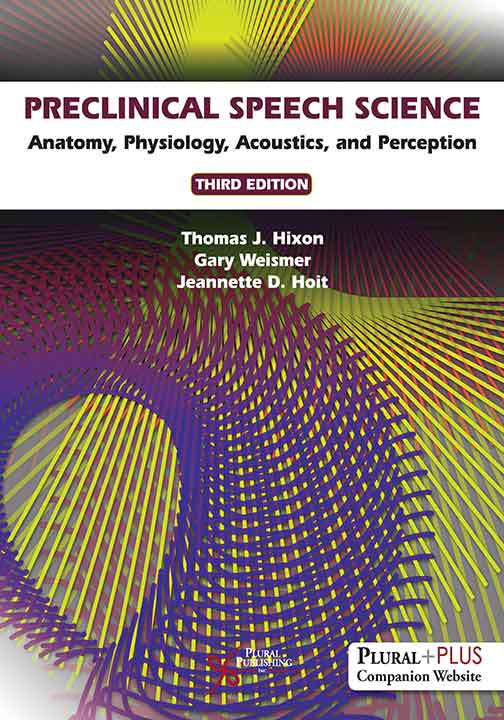
Preclinical Speech Science: Anatomy, Physiology, Acoustics, and Perception
Third Edition
Thomas J. Hixon, Gary Weismer, Jeannette D. Hoit
Details: 728 pages, Full Color, Hardcover, 8.5" x 11"
ISBN13: 978-1-63550-061-5
© 2020 | Available
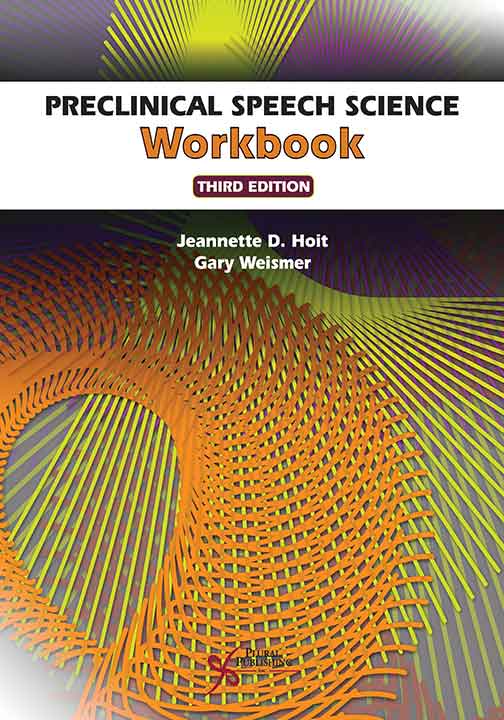
Preclinical Speech Science Workbook
Third Edition
Jeannette D. Hoit, Gary Weismer
Details: 436 pages, B&W, Spiral Bound, 8.5" x 11"
ISBN13: 978-1-63550-063-9
© 2020 | Available
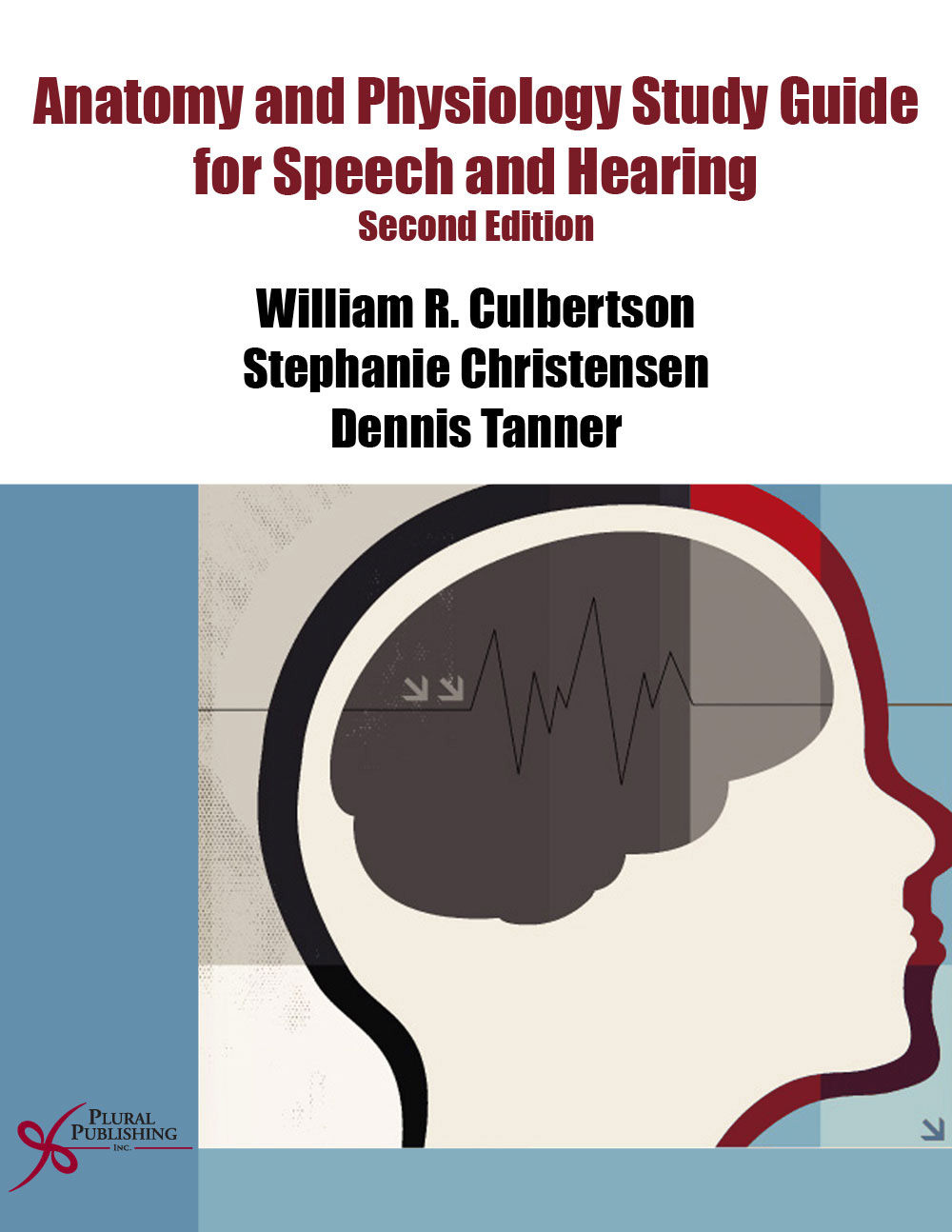
Anatomy and Physiology Study Guide for Speech and Hearing
Second Edition
William Culbertson, Stephanie Cotton Christensen, Dennis C. Tanner
Details: 416 pages, B&W, Softcover, 8.5" x 11"
ISBN13: 978-1-59756-496-0
© 2013 | Available
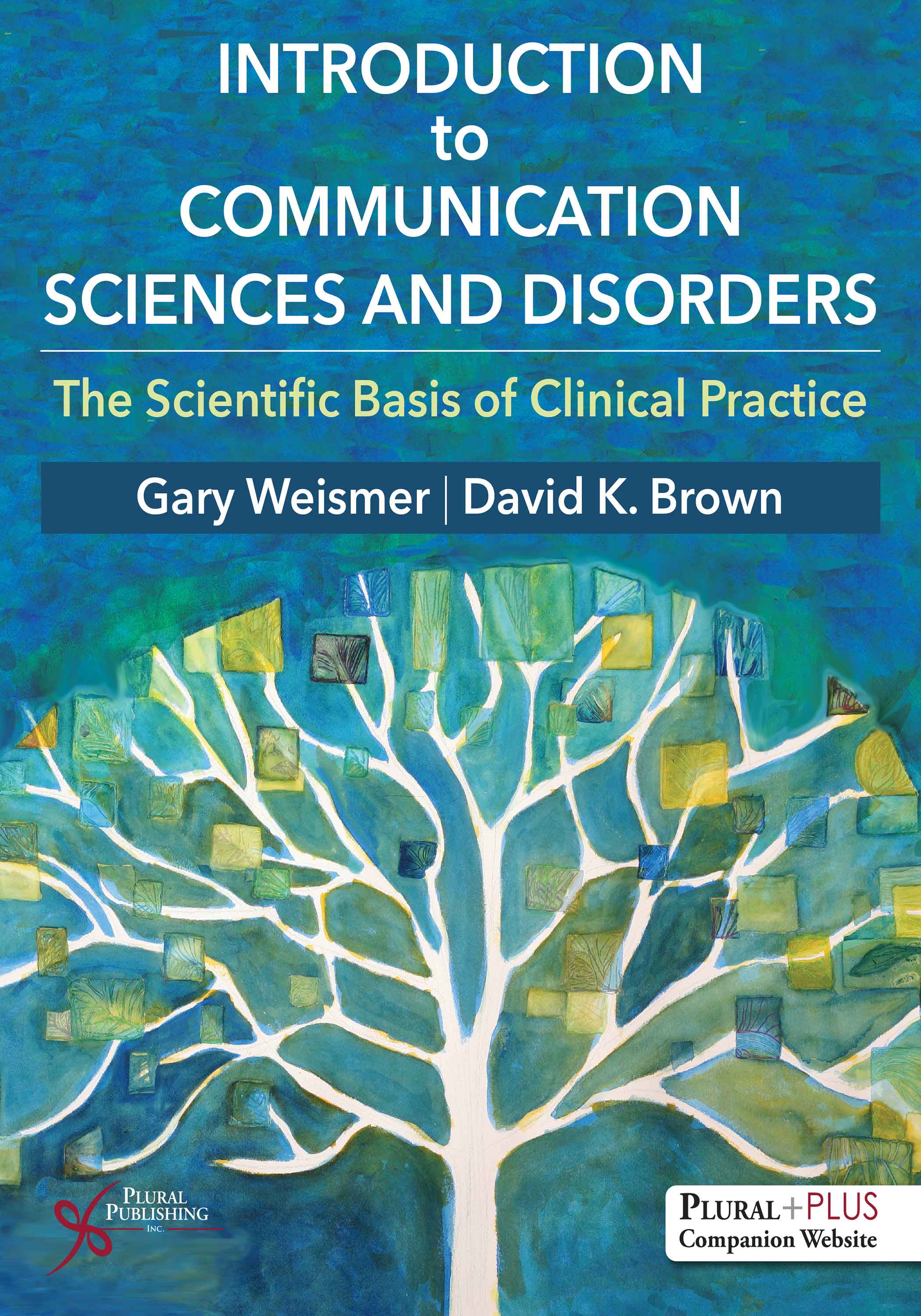
Introduction to Communication Sciences and Disorders: The Scientific Basis of Clinical Practice
First Edition
Gary Weismer, David K. Brown
Details: 388 pages, Full Color, Softcover, 8.5"x11"
ISBN13: 978-1-59756-297-3
© 2021 | Available
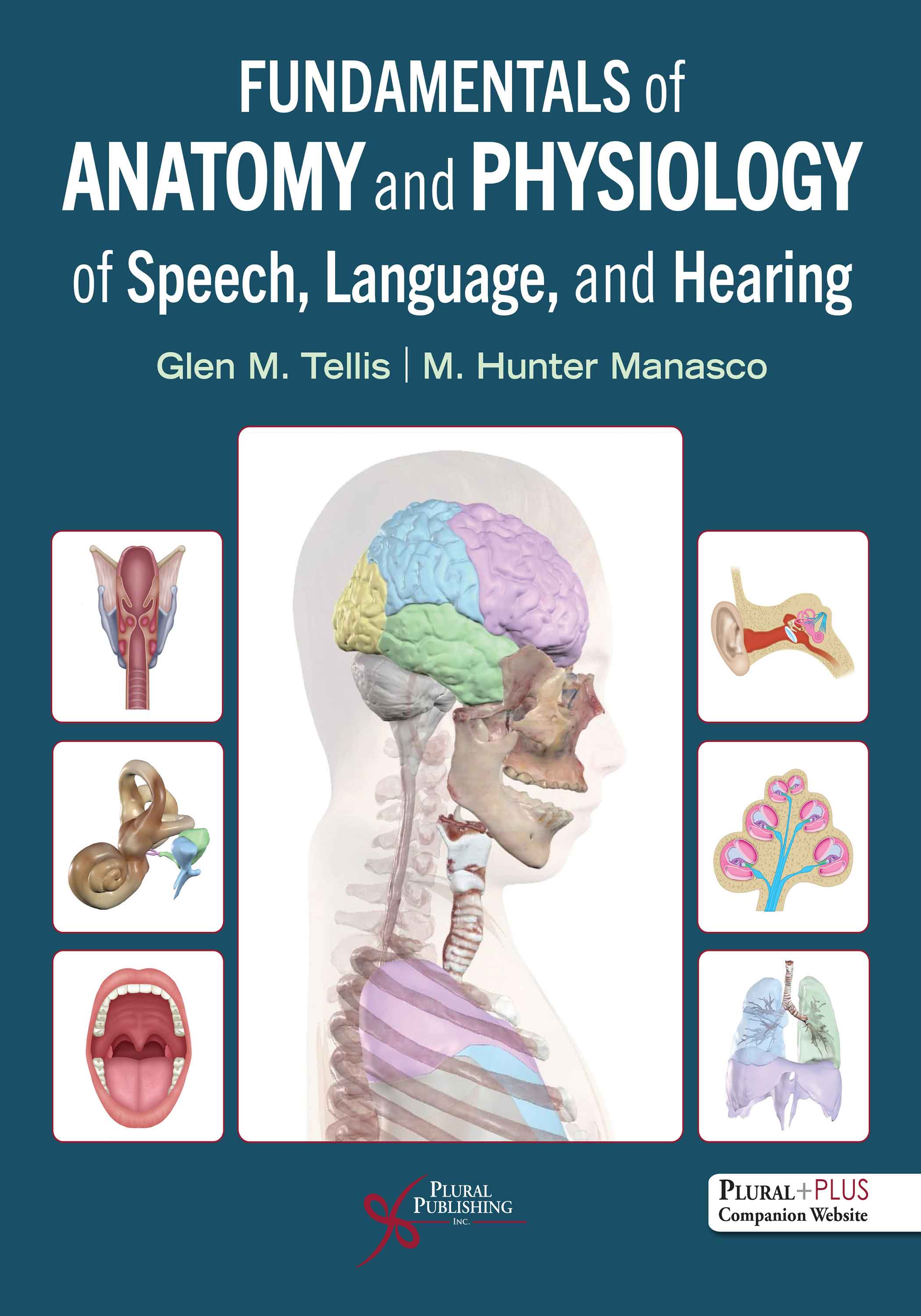
Fundamentals of Anatomy and Physiology of Speech, Language, and Hearing
First Edition
Glen M. Tellis, M. Hunter Manasco
Details: 478 pages, Full Color, Hardcover, 8.5" x 11"
ISBN13: 978-1-63550-720-1
© 2025 | Available
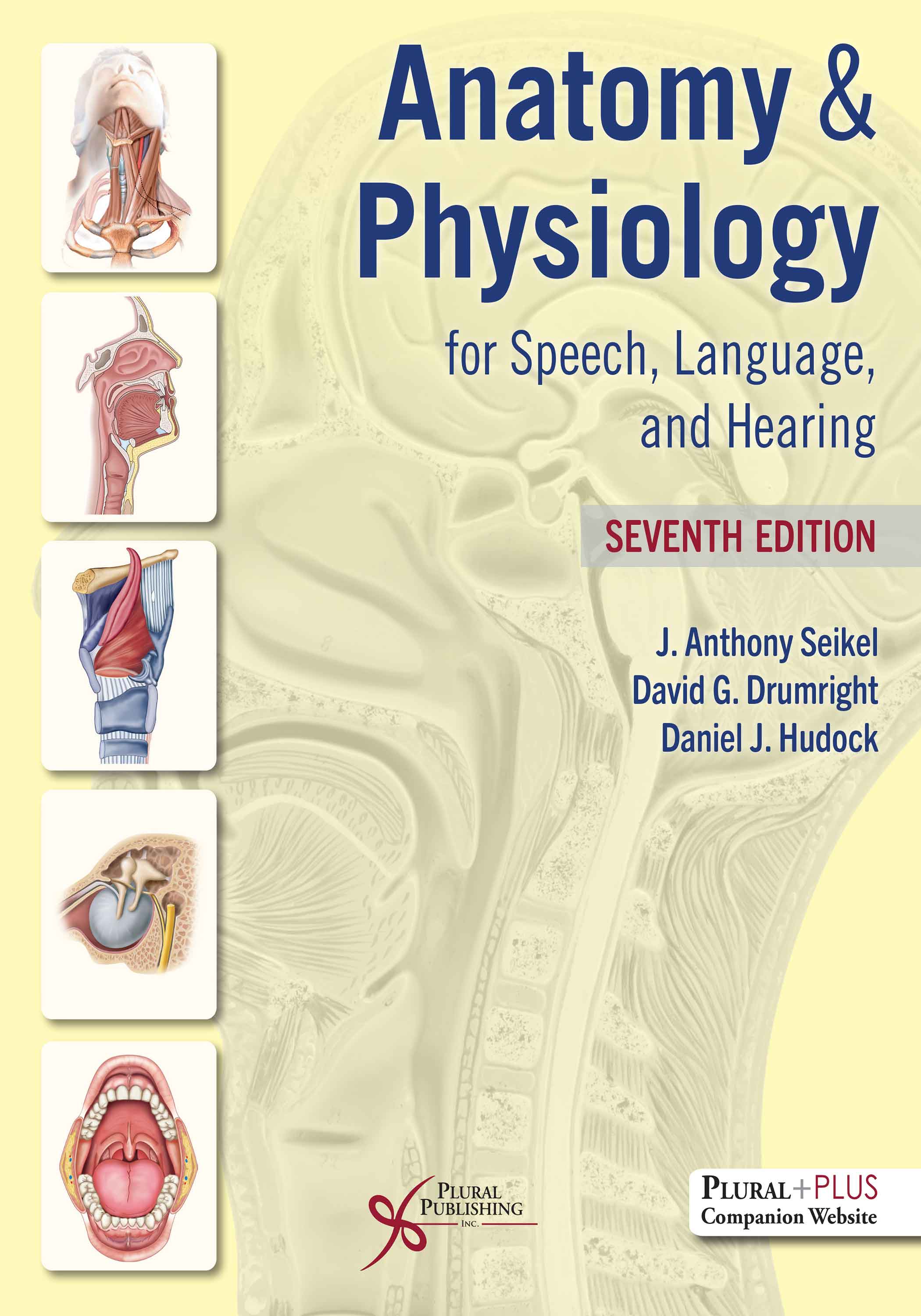
Anatomy & Physiology for Speech, Language, and Hearing
Seventh Edition
J. Anthony Seikel, David G. Drumright, Daniel J. Hudock
Details: 835 pages, Full Color, Hardcover, 8.5" x 11", with ANAQUEST study software
ISBN13: 978-1-63550-628-0
© 2025 | Available
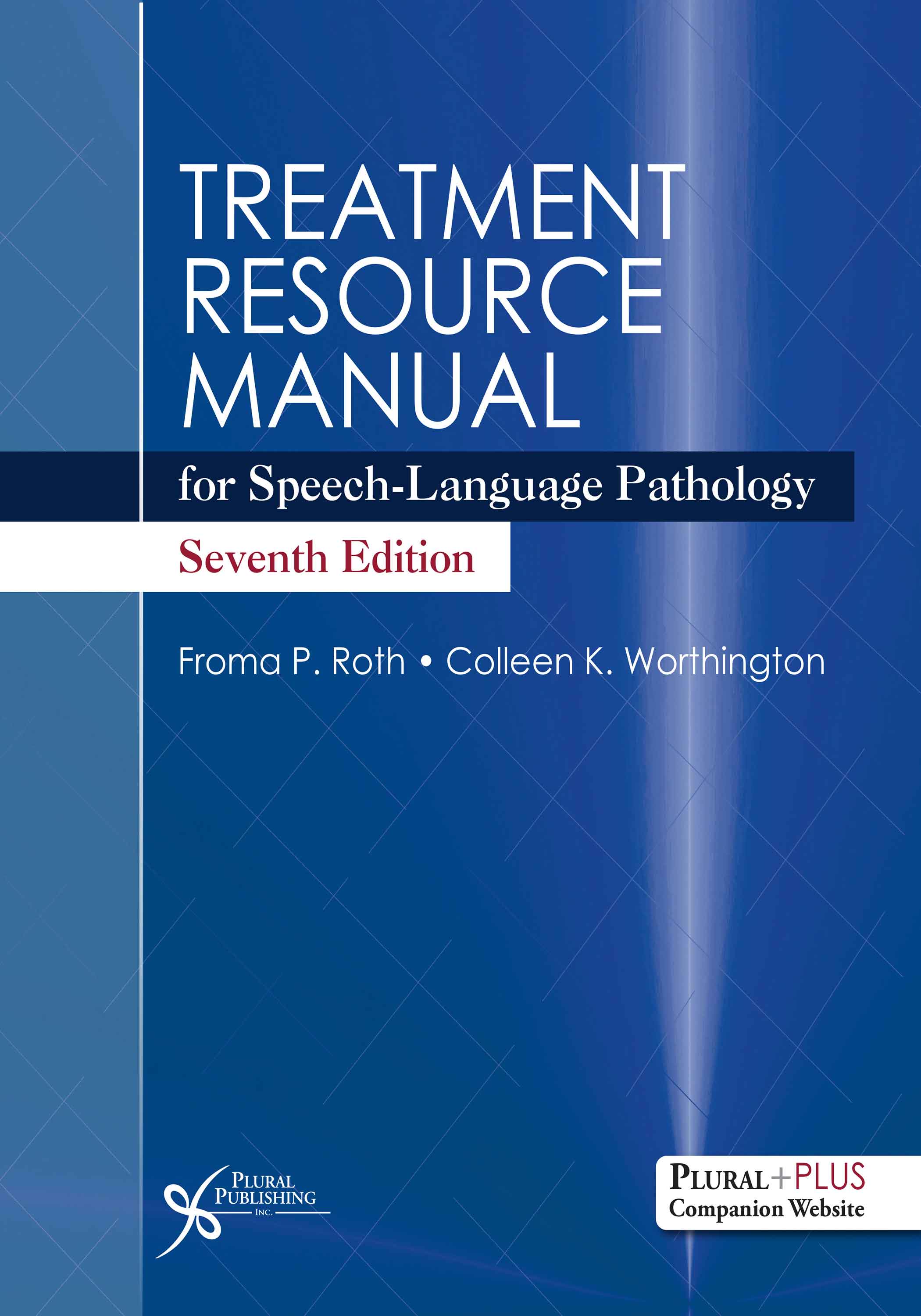
Treatment Resource Manual for Speech-Language Pathology
Seventh Edition
Froma P. Roth, Colleen K. Worthington
Details: 447 pages, Two-Color, Softcover, 8.5" x 11"
ISBN13: 978-1-63550-653-2
© 2025 | Available



